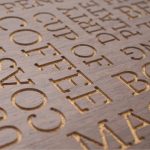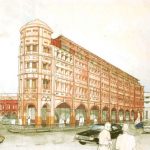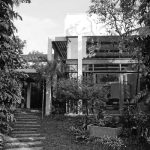-
Urban Recreational Hotspots
April 2013
Urban parks are an increasingly popular concept that has revitalized the main townships of Colombo. The revival schemes implemented in and around Colombo not only improve the visual image of the city but provides much needed space for recreation. Efforts are taken to energise the city atmosphere whilst addressing concerns of safety and accessibility.
Issues such as rain water drainage and seasonal floods are also tackled through increased water retention capacities of wetland parks and newly dredged reservoirs.
By Chiranji Abeywickrema
The movement has triggered significant urban regeneration. Development of the Independence Square and its surroundings, Diyata Uyana in Battaramulla and the Urban Wetland Park in Nugegoda are such efforts received with enthusiasm by the public. Commendable efforts are made by the Ministry of Defence, Sri Lanka Army, Sri Lanka Navy and Civil Security Department, Sri Lanka Land Reclamation and Development Corporation in this regard.
Independence Square and its surroundings were revived by the development of pedestrian links connecting the adjoining locations of importance such as the Racecourse, University of Colombo, Planetarium, Sri Lanka Broadcasting Corporation, Rupavahini Corporation, National Archives, National Library and Royal College. The removal of boundary walls of the public buildings have made the area more permeable presenting a vast landscape of manicured lawns and well grown trees. Pedestrian links through the public building premises connect with the national monument. It has resulted in a network of pathways that are used for recreational means of walking, jogging and cycling.
The recreational zone has successfully mitigated the traffic congestion. The availability of public transportation and dispersed parking zones in different surrounding locations linked by pedestrian walkways reduce congestion. The venue offers the flexibility to cater to an influx population owing to its permeable quality. A wide choice of eateries and shops are an added advantage. Pedestrian trails connect the Independence Square with restaurants and shops at the Racecourse and others in the vicinity.
Levels of illumination are a critical factor in public spaces. Well lit areas are frequented by the public even after dusk but certain areas of the pathways at Independence Square are dimly lit due to ad hoc positions and heights of the lamp fittings. Strategic use of lights can bring forth the monumental quality of the location and highlight its architectural features. The presence of the historic monument marks the importance of this venue. Measures should be taken to preserve its integrity, prevent vandalism and highlight its legacy.
Diyata Uyana was declared open in September 2012, with the addition of ‘Boardwalk’ Restaurant and ‘Good Market’ in December. It is a popular hot spot for young and the old alike for its picturesque location in the Diyawanna water front. Diyawanna Oya was dredged to form a reservoir as a rainwater catchment in the area. This substituted for the marshland reclaimed in the development of Waters Edge and its surroundings. The waterfront thereafter was developed for recreational purposes. The location attracts people travelling from far to experience the spectacular environment, while catering to the resident population seeking recreation and entertainment. Diyata Uyana features 84 horticulture trade stalls, frequented by many. The parking area is concealed by the white tensile structures that house the plant sales. The central court with manicured plants extends an invitation to the passersby. Paved pathways facilitate walking, jogging and cycling. Sail boats and paddle crafts offer water sporting and sightseeing opportunities. Artists and photographers are attracted by the scenic beauty of the location.
Strategic use of lights can bring forth the monumental quality of the location and highlight its architectural features
Interestingly designed street furniture includes a leaf shaped bus stop, tensile trade stall shelters, cement seats and tables and a central water fountain. A fair amount of outdoor lighting provides for night time functionality. The fountain with changing colours, children’s play areas and 3D paintings are welcoming features enjoyed by the patrons.
The ‘Good Market’ offer environmental friendly products. Organic fruits and vegetables grown with chemical free methods, arts and crafts, natural health products, natural beauty care products, non toxic home and garden products, sun dried food and much more are among the consumer items.
The venue turns into the hub of activity by night attracting the passing motorists. The demand, however surpasses the traffic arrangements, parking availability and dining facilities. Board Walk caters to approximately 200 guests. A floating restaurant that can accommodate 35-40 guests on a 51 x 31 feet vessel is another dining facility managed by Waters Edge in collaboration with the Sri Lanka Navy. Pre-reservation is needed for both facilities due to the tremendous demand and ease of operation.
A 1.45Km long walk was developed along the eastern banks of Diyawanna Oya, which is also popular with those who seek early morning or evening fitness.
Urban parks are a necessity that enhance the life styles of the urban population, promote interaction and boost the imagery of a city
The eco system of the area was boosted through the improved water ways and landscaping features. The expanded water ways help the rain water drainage network in the area and mitigate seasonal flooding. Trees were retained as small islets during the process of dredging so that the habitat of birds and other animal species attracted by the innate eco system of the area is not destroyed. The programme has a wider objective of providing a catalyst for tourism promotion. Boat rides between Wellawatta and Battaramulla are organised by Sri Lanka Navy as means of improving public transport, tourism promotion and leisure.
The Urban Wetland Park in Nawala-Nugegoda area was declared open in January 2013. An open space in the heart of the city was converted into a much needed public facility that is invigorating to the character of the city. The park is about five acres in extent due to the limited availability of land and is a significant contributor to the recreational needs of the population. Sandy paths are created for jogging, cycling and playing with an old armoured tank creating an attraction for children.
The wetland is a catalyst for rain water discharge of the township while water is used as a cooling element in the harsh urban climate. Resting places with cemented tiers provide places of relaxation and space for interaction. The high levels of lighting and unobstructed vision through the landscape make it a safe and attractive environment by night. Accessibility, however, is restricted due to its location and limitations in space. The demand for recreational space is high due to the large number of residential neighbourhoods in the vicinity. Therefore traffic congestion is experienced during peak usage of the new facility. The park also has the disadvantage of being located away from the main nodes of public transportation.
An urban park with a sustainable ecosystem is an asset to its locality. Therefore it is important to evoke awareness among its users to respect and safeguard the environment for future generations
The undue use of private vehicles to gain access adds to the congestion. Upgrading pedestrian ways in the area and opening up avenues to connect other public buildings of significance with the park can improve its accessibility. Gradual linkages with food courts, shops and other commercial ventures may be established over time.
Urban parks are a necessity that enhance the life styles of the urban population, promote interaction and boost the imagery of a city. Quantifying the demand of a locality and identifying the changing needs can give rise to attractive urban environments. Local participation and periodic evaluations improve user satisfaction. Budgetary allocations therefore should consider future adaptations in public space due to changing needs. The ability to temporarily define a comfort zone within the large public space should be duly facilitated with the provision of seating and other infrastructure facilities. Designing of resting places with adequate seating, child friendly facilities and disable access are important considerations in creating a public realm that is accessible to all.
Easy access, systematic connections to important locations in the vicinity, ecological conservation, obtaining professional input in planning, lighting and safety standards are considerations that will improve public usage. Evenly dispersed flora provided shelter and frames the views without creating dim nooks and corners that give rise to crime. Indigenous flora and fauna that would improve the eco system should be given prominence in landscaping.
Food and alcohol, pets, street vendors are not allowed in certain public parks to control the cleanliness of the environment and create a sense of order within. Social filters are used in many public spaces. Guards are stationed to monitor the activities and prevent misconduct. An urban park with a sustainable ecosystem is an asset to its locality. Therefore, it is important to evoke awareness among its users to respect and safeguard the environment for future generations.























